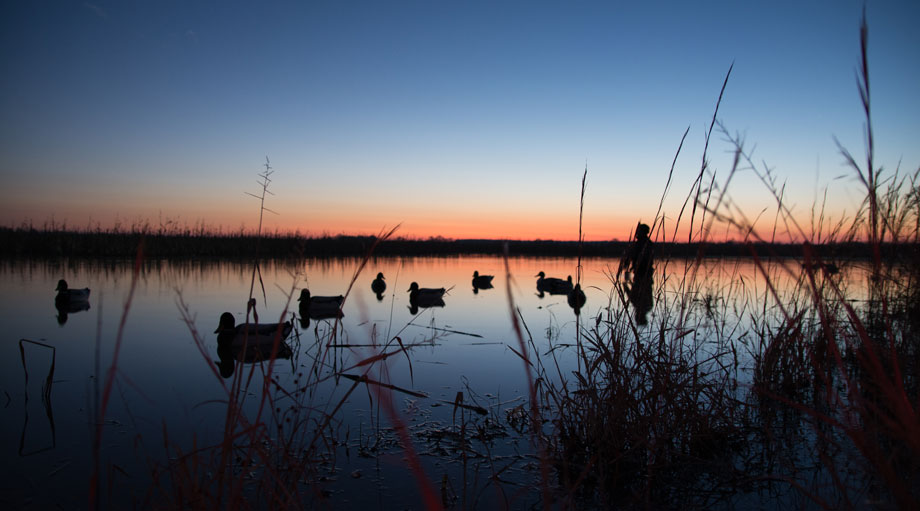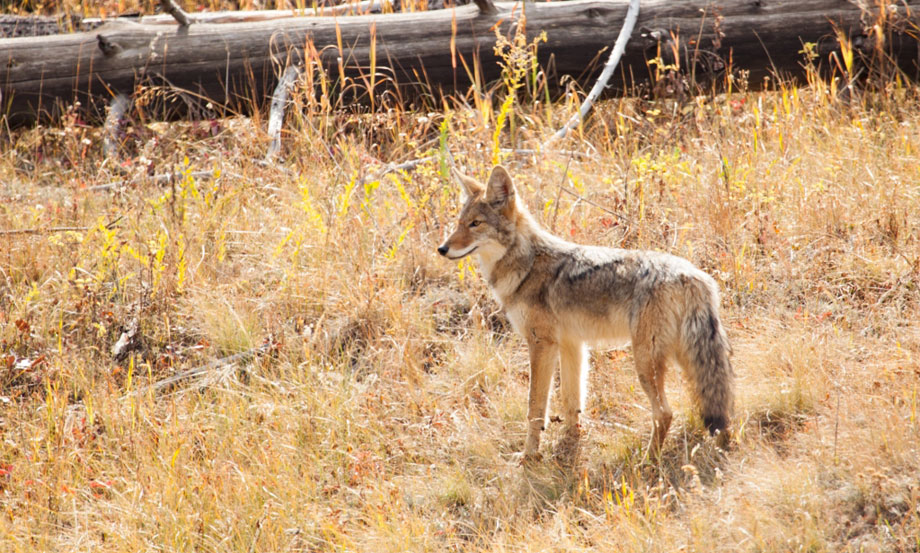Barnie Calef | Mossy Oak ProStaff

When I'm hunting stale ducks during the late season, I use two types of decoy spreads. I’ll put out smaller decoy spreads in a really secluded area and perhaps only two dozen decoys in a pothole. The water may be so shallow in these little potholes that we may not be able to get our boat blind in to them. We may have to wade into them, which is nothing new for many duck hunters. Using small spreads at the end of the season is a tactic that most veteran duck hunters use anyway.
I use a gigantic decoy spread for my other decoy spread. Our ducks go out to feed early in the morning. Then they fly down the river headed for Lewis and Clark Lake near Yankton, South Dakota, on the Missouri River, to rest. If we can put out 300 decoys in the late season, those ducks coming down the river are not accustomed to seeing a spread that big but instead usually see decoy spreads of 24-50 ducks. Therefore, when they spot a huge spread, we get their attention. Whether or not we can pull them in to our decoys is another story. But at least, we get them to give our decoys a look and often drop down and swing around a second time to give that decoy spread a second look. If we’re lucky, we can pull them into that big spread, where we haven’t been able to pull them into the little spread like everyone else uses.
When you're hunting end-of-the-season stale ducks, I've learned that if you set up your decoy spread and call like everyone else calls, then your chances of taking any of those smart birds are next to nothing. So, we try to call differently, set up in places where most people won’t and use extremely small decoy spreads in potholes that most hunters won’t hunt. Or, we’ll set up in big water with big duck spreads that are different from the size of the spreads that the ducks see all up and down the river.
I'm often asked what camo pattern I like when I waterfowl hunt. That answer depends on where I'm hunting. If I'm hunting in the South, and our blind is close to some timber, I like Mossy Oak Bottomland. But in the Midwest and the Northwest, I tend to prefer Mossy Oak Shadow Grass Blades. I wear that camo pattern about 90 percent of the time.
Mossy Oak Pro Barnie Calef of Cedar Rapids, Iowa, who has been hunting ducks for 47 years, is the owner of Calef Calls Inc. that produces duck and goose calls. Calef is also the host of Drake’s Migration Nation on the Pursuit Channel. Although Calef hunts waterfowl primarily in the Midwest, he hunts waterfowl all over the nation, too.






























